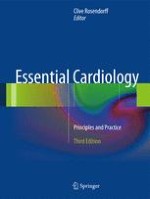Abstract
Gene therapy is rapidly evolving as an effective therapeutic strategy for patients suffering from various forms of cardiovascular disease. Since the conceptualization of gene therapy, the scientific and clinical community has learned a great deal from the successes and, unfortunately, failures of previous gene therapy clinical trials over the past decades. Cardiovascular gene therapy has benefitted from recent advancements in vector technology, design and vector delivery modalities. Nonviral and viral vectors including plasmids, retrovirus, lentivirus, adenovirus, and adeno-associated virus each have unique cellular transduction mechanisms and expression profiles. Due to the exclusive qualities of each vector, the selection and development of vectors for cardiovascular gene therapy is critically dependent on the specific cardiac pathology. In addition, how these vectors are delivered to the heart greatly affects myocardial transduction and clinical outcomes. It is necessary to employ the proper vector and delivery modality that can safely and efficiently transduce the myocardium with well-validated transgenes shown to protect against acute ischemia, arrhythmias, hypertrophy, or ventricular failure. Gene therapies targeting the β-adrenergic pathway, calcium regulatory mechanisms, angiogenesis, or the CXCL12/CXCR4 axis have shown promise both preclinically and in human clinical trials. The current state of the art of cardiovascular gene therapy as well as clinically significant molecular targets is reviewed as this promising strategy enters the clinical realm.
